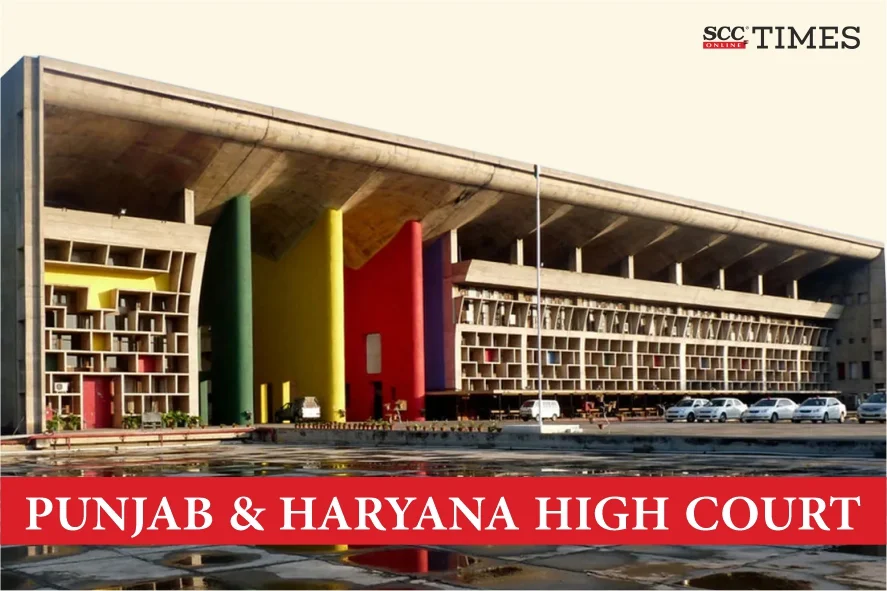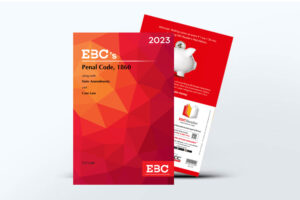Punjab and Haryana High Court: An appeal was filed against the judgment dated 08-10-2021, passed by the Special Judge (CBI), Haryana at Panchkula (‘the Trial Court’), convicting the appellants for offences punishable under Sections 302, 506 read with Section 120-B of the Penal Code, 1860 and also under Section 27 of the Arms Act, 1959. The Division Bench of Sureshwar Thakur* and Lalit Batra, JJ., opined that there were multiple lapses in the investigation conducted by the investigation agency as the car which was allegedly used in the commission of the crime event was never seized. Witnesses in their respective statements stated that all four assailants were armed with firearm weapons, but none of those weapons were seized by the Central Bureau of Investigation (‘CBI’). There was no site plan prepared by the CBI of the place where the alleged conspiracy was hatched. The CBI also did not collect any evidence from the restaurant where one of the witnesses allegedly saw the co-accused openly celebrating the murder of the deceased and failed to examine the owners or the workers, who were serving in the said restaurant.
Consequently, the Court quashed and set aside the judgment passed by the Trial Court and acquitted the appellants of the charges drawn against them.
Background
The complainant made a statement to the police that on 10-07-2002, his son brought tea for the labourers working in the fields and after giving tea, he left the fields when four persons with pistol in their hands came out of the fields and fired indiscriminately at his son-the deceased. The deceased was then taken to the hospital where he was declared dead. The complainant raised the suspicion about some people who got his son killed as they had dispute with him since the Panchayat elections and were threatening him. Thus, the FIR was registered against them.
However, during investigation, the complainant told them that the followers of Dera Sacha Sauda had killed his son as they suspected him behind the circulation of the anonymous letter of a Sadhvi alleging sexual exploitation of sadhvis in the Dera by Baba Gurmeet Singh, Chief of Dera. The investigation of this case was transferred to CID Crime Branch, Haryana on 22-11-2002. Further, not being satisfied with the investigation conducted by the local police, the complainant sent a petition to the Chief Justice of Punjab and Haryana High Court requesting for CBI investigation, and subsequently, the case was transferred to the CBI.
Investigation conducted by the CBI established that suspecting the deceased to be behind circulation of anonymous letter alleging sexual exploitation, all the five appellants i.e., accused Baba Gurmeet Ram Rahim Singh, Chief of Dera Sacha Sauda, Sirsa; Inder Sain, Manager of the Dera; Avtar Singh, an important functionary of Dera Management; Krishan Lal, Prabandhak; Jasbir Singh and Constable Sabdil Singh, body guard of Baba Ram Rahim Singh entered into a criminal conspiracy to eliminate the deceased. Accordingly, the Trial Court convicted all the five appellants, and the appellants being aggrieved from such convicted filed the present appeal.
Analysis, Law, and Decision
Motive
The Court noted that the marriage of the deceased’s sister was solemnized in October 2001, prior to the circulation of anonymous letter, therefore naturally the deceased would not have taken any precarious steps to injure the marital life of his sister. The Court further opined that it appeared that no animosity spurred between the deceased and Baba Ram Rahim Singh, nor there was any motive etched in his mind, for directing the other co-accused to eliminate the deceased.
Purported Conspiracy Meeting
The Court noted the statement of the witnesses, who were present at the house of the deceased, when the deceased was threatened by the co-accused persons to apologize to Baba Ram Rahim, and opined that the contradictions in the testimonies of the witnesses with respect to the incident, when the co-accused allegedly visited the house of the deceased created a shred of doubt to the prosecution case. The Court opined that the prosecution had not been able to prove through adduction of cogent evidence that on 16-06-2002, the accused threatened the deceased for his act of circulation of anonymous letter. Further, prosecution completely failed to adduce the cogent evidence that the co-accused visited the deceased’s house to threaten the deceased. The prosecution was also unable to efficaciously prove that there was a meeting held on 16-06-2002, wherein Baba Ram Rahim Singh directed the co-accused to eliminate the deceased.
Blemished Eyewitness Account
The Court also noticed that there were contradictions in the testimonies of the witnesses with respect to the place of firing and the persons who had taken the deceased to the hospital. One of the witnesses stated that the firing took place at the GT Road, whereas the other witness stated that the firing took place between the tube well and the place, and as per the site plan, the GT Road and tube well were at different directions. Therefore, the gross difference between the crime sites created a doubt about the truth of the statements made by the witnesses.
The Court stated that one of the witnesses, after re-stepping into the witness box in 2018, made an incriminatory statement against the accused, and contradicted his previously made testimonies in 2012. Thus, the testification on oath by that witness, before the Trial Court in 2018 was bereft of any creditworthiness.
Vague Identification of Accused in Court
The Court referred the identification of the co-accused as extremely weak identification by the witness. The Court stated that the complainant did not make any description about the physical features/characteristics of the assailants and no valid test identification parade was conducted by the investigating agency. The Court opined that the identification of the co-accused in the Court, without previously describing their key characteristic features or physical attributes and when no test identification parade was conducted, made the identification to be extremely feeble.
The Court further stated that the testimony of complainant’s nephew could not be relied upon, as he was an eyewitness to the crime event and was present at the place of occurrence, yet he failed to mention any physical characteristics/features of the assailants. Thus, it was also an extremely unworthwhile identification. The Court also could not place reliance on the chance witness, as on his examination, he stated that he saw four persons coming from the side where the fields of the deceased were situated, and, those persons were carrying firearms, but he failed to provide the description of the weapons.
Weapon of Offence
The Court opined that though the CBI and the complainant had argued that recovery as was made of the weapon of offence, but it was revealed from the records that the weapon was deposited in the armoury. The Court opined that the charged weapon of offence was throughout in the armoury and was not available to be used as the relevant weapon of offence at the crime site for committing the crime.
Lapses in the Investigation
The Court opined that there were multiple lapses in the investigation conducted by the investigation agency as the car which was allegedly used in the commission of the crime event was never seized. Witnesses in their respective statements stated that all four assailants were armed with firearm weapons, but none of those weapons were seized by the CBI. There was no site plan prepared by the CBI of the place where the alleged conspiracy was hatched. The CBI also did not collect any evidence from the restaurant where one of the witnesses allegedly saw the co-accused openly celebrating the murder of the deceased and failed to examine the owners or the workers, who were serving in the said restaurant. The Court further stated that as per the complainant’s statement, his clothes along with clothes of his nephew and one other person were smeared with blood stains while transporting the deceased in the car to the hospital yet the investigating officer failed to collect their clothes and failed to examine the car.
Postmortem Report
The Court opined that the postmortem report (‘PMR’) was inconsistent with the complainant’s statement, who stated that the deceased was shot from a close range. However, neither any opinion on the distance of firing has been mentioned nor any blackening around any of the injuries was mentioned in the PMR. Thus, medical evidence remained unsubstantiated from the ocular version of the crime event as rendered by the eyewitnesses.
Polygraph Test
The Court opined that the consent of the accused, whether in or outside the custody was sine quo non for the makings of a valid polygraph test. Further, it is stated in Selvi v. State of Karnataka, (2010) 7 SCC 263, that the polygraph test was not a perfect science, and the results of the said test required clinching corroborations through recoveries as per Section 27 of the Evidence Act, 1872. Thus, when there was neither any clinching corroboration to the deceptive answers by the accused who underwent the polygraph test, especially from any efficacious recoveries through other incriminatory material which was of an extremely tenuous nature, the results of the said polygraph test, loose their evidentiary potency.
The Court opined that the present case was a stark portrayal of the necessity of Courts of law to make an incisive and objective analyses, of the evidence rather than becoming stultified through a proactive media trial. Moreover, media trials were not at all required to be the guiding regiment for making objective evaluations of evidence on record. However, the intellectual strength of the investigating officer appeared to have been satirized by the glare of media publicity of the crime. Thus, the investigating officers carried out a tainted and investigations into the crime event and collected evidence which was unworthy of credence.
Consequently, the Court quashed and set aside the judgment passed by the Trial Court and acquitted the appellants of the charges drawn against them. The Court stated that the personal and surety bonds of the appellants were cancelled and discharged and if the convicts were in custody they were directed to be released from prison.
[Jasbir Singh v. CBI, 2024 SCC OnLine P&H 4200, decided on 28-05-2024]
*Judgment authored by- Justice Sureshwar Thakur
Advocates who appeared in this case :
For the Appellants: R.S. Rai, Senior Advocate with Gautam Dutt, Advocate, Anurag Arora, Advocate, Radhika Mehta, Advocate and Farhad Kohli, Advocate; R. Basant, Senior Advocate with Akshay Sahay, Advocate, Amar D. Kamra, Advocate, Jitender Khurana, Advocate, Aman Jha, Advocate and Rishu Tutu, Advocate; Sonia Mathur, Senior Advocate with Amit Tiwari, Advocate, Harish Chabra, Advocate, Nikhil, Advocate, Madhav Singhal, Advocate and Mayank Aggarwal, Advocate; P.S. Ahluwalia, Advocate and Balraj Singh Sidhu, Advocate; Mohinder S. Joshi, Advocate and Ravneet Joshi, Advocate;
For the Respondent: Ravi Kamal Gupta, Advocate with Kompal Arora, Advocate.
For the Complainant: R.S. Bains, Senior Advocate with Aman Raj Bawa, Advocate, Anmol Deep Singh, Advocate and Amarjeet Singh, Advocate.








